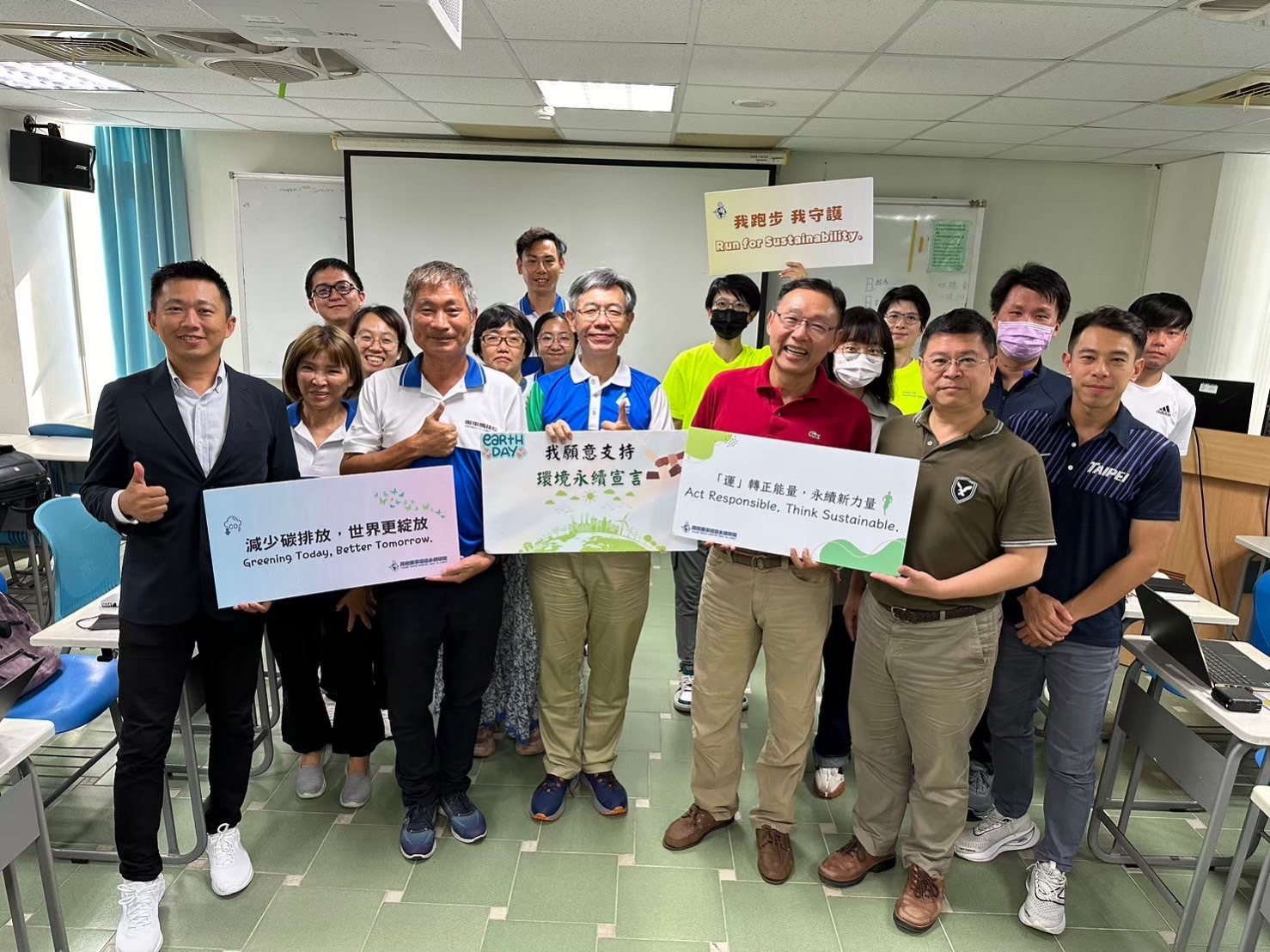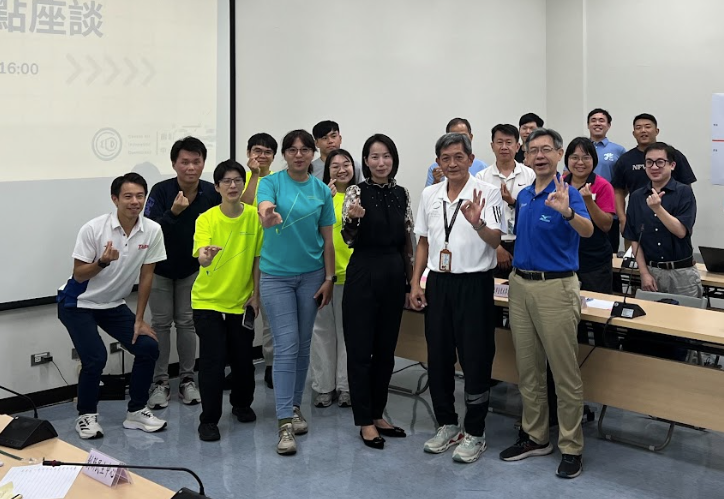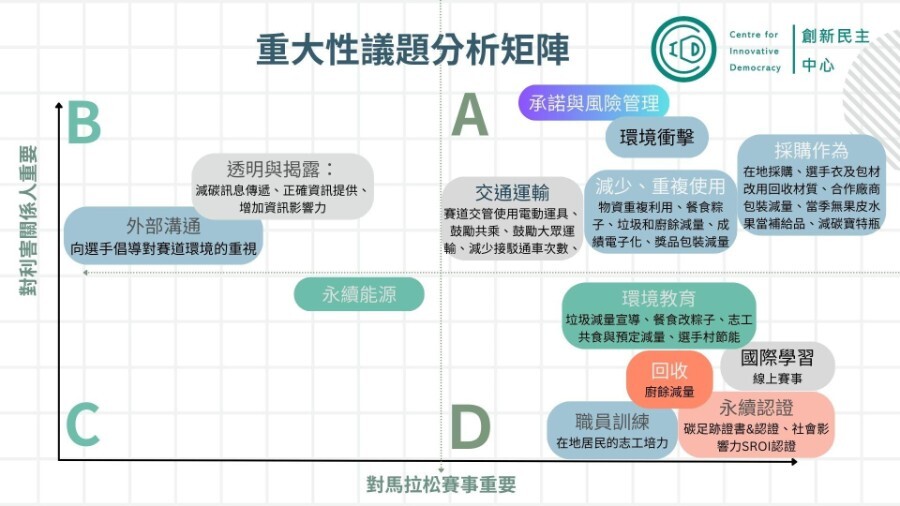The First Environmental Materiality Analysis Report for Running Race Organizers is Released
The First Environmental Materiality Analysis Report for Running Race Organizers is Released

Four race organizers met with experts to discuss the materiality matrix for their marathon
The road-running community in Taiwan has achieved a significant milestone in environmental sustainability. In a unique collaboration, the Taipei Marathon (organized by the Taipei City Government), Taiwan's Rice Heaven Tianzhong Marathon (organized by the Shukang Recreation Sports Association), and the Chinese Taipei Association of Ultrarunners have conducted their first environmental materiality analysis for their marathon, in partnership with the National Tsing Hua University. Professor Yu Huang from National Tsing Hua University, who assisted these three organizations in conducting the materiality analysis, stated that this work is essential for formulating any organization’s environmental sustainability strategy. He noted that it is very similar to companies' situational analysis when developing business strategies. Professor Huang also pointed out that major international marathons, such as the New York Marathon, have adopted this approach to formulate environmental sustainability strategies. Furthermore, almost all corporate sustainability reports feature materiality analysis in their first chapter, highlighting the importance of this work. This materiality analysis for road-running events explores the key issues affecting environmental sustainability from the perspectives of event organizers, volunteers, venue managers, event suppliers, and runners. It emphasizes the crucial role these stakeholders play in executing environmental sustainability.

The Taipei Marathon event team held the meeting with strategic partners (i.e., NTHU)
These three organizations invited the core members of their event organizing teams to discuss major issues impacting environmental sustainability, including transportation, procurement, waste management, carbon footprint calculation, supplier cooperation, education and training, and runner participation. They understand that effective communication with stakeholders about environmental sustainability is crucial and a key driver of change. For example, KUO, Feng-Chou, Chairman of the Chinese Taipei Association of Ultrarunners, mentioned that the association has implemented many eco-friendly practices, including carbon footprint analysis and auditing methods. However, the key communication challenge lies in gaining more runners' understanding and support for the association's philosophy. Similarly, Zheng Zong-Zheng, founder of Taiwan's Rice Heaven Tianzhong Marathon, pointed out that the number of volunteers for the event can reach as high as 8,000. Many environmental efforts, such as encouraging the use of reusable cups or low-carbon transport, require volunteer cooperation, making internal communication crucial. Additionally, Deputy Commissioner Tsai of the Department of Sports, Taipei City Government, stated that the Taipei Marathon is one of the city's key marketing platforms, with full support from various government departments. Many departments actively participate in energy-saving and carbon-reduction efforts, such as the Taipei Metro starting operations early, the Taipei Water Department providing self-service water stations, and the Taipei City Police Department primarily using electric motorcycles. Developing an evaluation mechanism would help assess the effectiveness of these energy-saving and carbon-reduction efforts, further underscoring the importance of ongoing communication and evaluation.

Materiality matrix of Taiwan's Rice Heaven Tianzhong Marathon
Professor Huang, who led this analysis, made three recommendations for future work. First, the selection of dedicated personnel: Often, event organizations learn by doing, and event staff are responsible for many duties, including environmental sustainability tasks. To enhance their professional capabilities, internal education is needed, and dedicated staff should be assigned. Second, the involvement of external stakeholders: The participants in this analysis were mainly core members of the event host, considered internal stakeholders. Expanding the analysis to include external stakeholders, such as suppliers, volunteers, runners, and the media, would enhance its comprehensiveness and provide a holistic perspective for developing strategies. Third, the formation of environmental sustainability strategies: The essence of materiality analysis is to examine the key issues identified by both internal and external members of the organization. The results of the analysis can be used to develop these strategies. Professor Huang also expressed gratitude for the recent support from the National Science and Technology Council.
